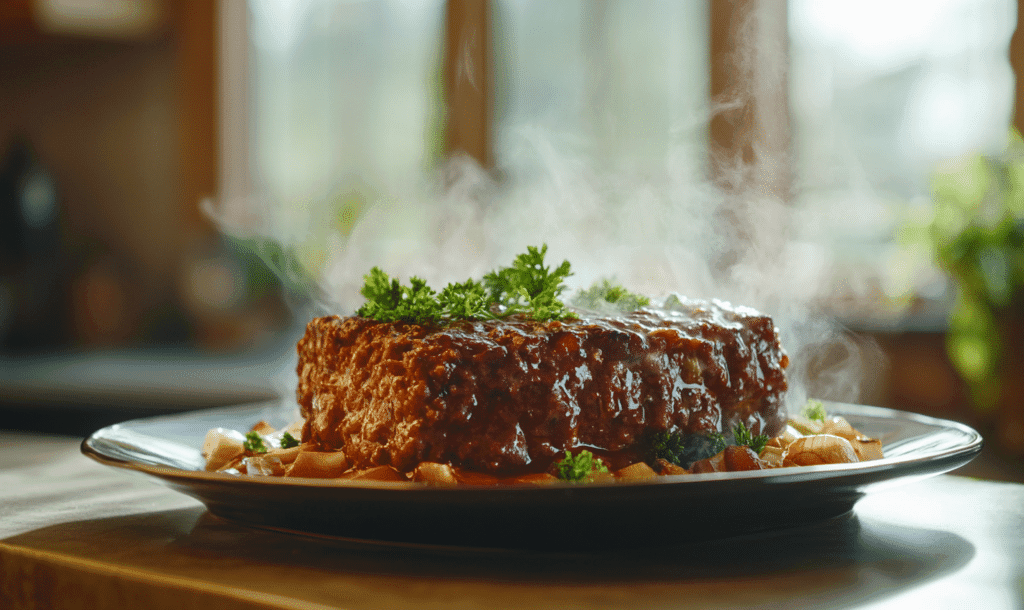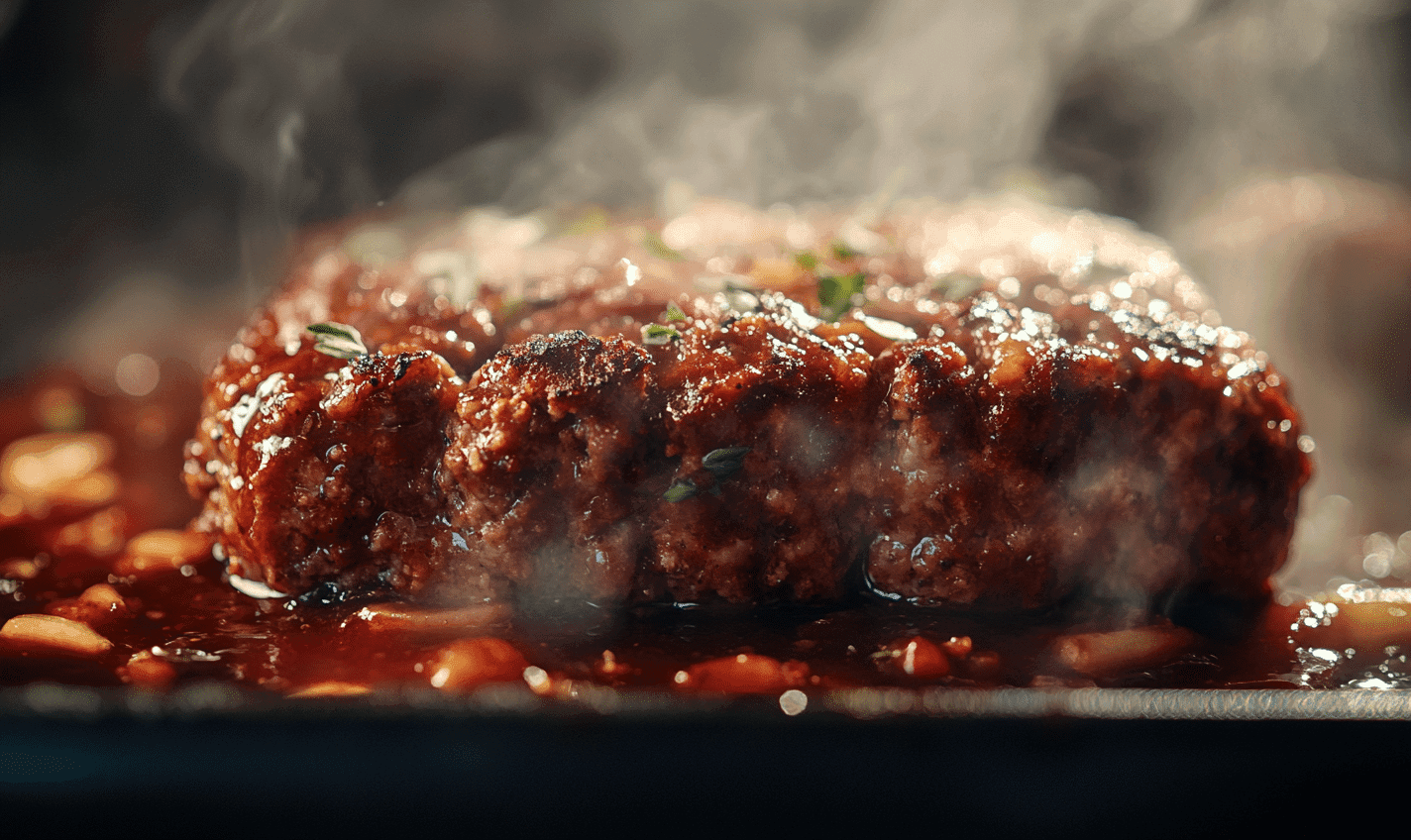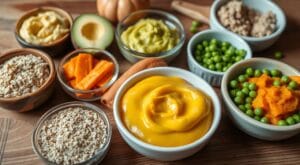Jump to:
Estimated reading time: 12 minutes
Table of contents
Introduction
Meatloaf is a beloved comfort food, cherished for its hearty flavor, easy preparation, and versatility. Over the years, cooks have experimented with countless recipes and techniques to perfect this classic dish. One such technique that might surprise you is the addition of baking soda to the meatloaf mixture. If you’ve ever wondered why you put baking soda in it, you’re not alone. This seemingly simple ingredient can make a world of difference in the texture, flavor, and overall success of your meatloaf.
In this comprehensive guide, we’ll explore the science behind using baking soda in meatloaf, how it affects the cooking process, and why it can be the secret to a perfect meatloaf. We’ll also provide tips on how to use it correctly, so you can achieve the best results every time. By the end of this article, you’ll have a deep understanding of why baking soda is a valuable addition to your meatloaf recipe and how it can elevate your cooking to the next level.
The Science Behind Baking Soda in Meatloaf
To understand why you put it in meatloaf, it’s important to first understand what it is and how it works in cooking. Baking soda, also known as sodium bicarbonate, is a chemical leavening agent commonly used in baking to help dough rise. When baking soda is combined with an acidic ingredient and exposed to heat, it produces carbon dioxide gas, which creates air pockets and gives baked goods their light and fluffy texture.
But baking soda’s benefits extend beyond baking cakes and cookies. When used in meatloaf, baking soda can help tenderize the meat, enhance its flavor, and improve its overall texture. Here’s a closer look at the science behind using it.
Tenderizing Meat with Baking Soda in Meatloaf
One of the primary reasons to use it is its ability to tenderize the meat. Baking soda works by raising the pH level of the meat’s surface, making it more alkaline. This change in pH affects the proteins in the meat, causing them to break down and become less tough. As a result, the meat becomes more tender and moist, which is especially beneficial for ground meats like beef, pork, or turkey that are commonly used in meatloaf. For a deeper dive into this process, check out this Serious Eats article.
When you add it to meatloaf, you’re essentially giving the meat a head start in the tenderizing process before it even hits the oven. This can be particularly useful if you’re using leaner cuts of meat that tend to be less fatty and more prone to drying out during cooking. The result is a meatloaf that is not only tender but also juicy and full of flavor.
Enhancing Flavor with Baking Soda in Meatloaf
Another reason to include it in meatloaf is its ability to enhance the flavor of the dish. When it interacts with the acidic components in the meatloaf mixture—such as ketchup, tomato paste, or Worcestershire sauce—it neutralizes some of the acidity. This not only balances the overall flavor of the meatloaf but also allows the other seasonings and spices to shine through more prominently. For more tips on enhancing flavors in meat dishes, you can refer to this Lifehacker article.
Moreover, the tenderizing effect of baking soda helps the meat absorb the flavors of the other ingredients more effectively. By breaking down the proteins and creating a more porous texture, the meat is better able to soak up the seasoning, resulting in a more flavorful dish.
Improving Texture with Baking Soda in Meatloaf
Texture is a critical component of a good meatloaf, and using it in meatloaf can significantly improve this aspect. As mentioned earlier, baking soda creates air pockets in the meat, which helps to keep it light and tender. This is particularly important in meatloaf, where the mixture of ground meat, breadcrumbs, and eggs can sometimes result in a dense, heavy loaf if not handled properly.
The addition of it in meatloaf helps to create a more uniform texture, with a consistent, tender crumb throughout. This makes the meatloaf easier to slice and more enjoyable to eat. Additionally, the improved texture also contributes to the overall mouthfeel of the dish, making it more satisfying and less likely to feel heavy or dry.
How to Use Baking Soda Correctly
Now that we’ve explored the benefits of using it in meatloaf, let’s discuss how to use it correctly to achieve the best results. While baking soda can be a powerful tool in the kitchen, it’s essential to use it in the right proportions and at the right stage of the cooking process. Here are some tips on how to incorporate it effectively.
The Right Amount of Baking Soda in Meatloaf
When it comes to using it, a little goes a long way. Typically, you’ll only need about 1/4 teaspoon of baking soda per pound of ground meat. This small amount is enough to tenderize the meat and improve the texture without overpowering the flavor or causing the meatloaf to become too soft. For more guidance on ingredient proportions, you might want to explore Cook’s Illustrated.
It’s important not to overdo it with the baking soda, as using too much can result in a bitter taste or an overly alkaline flavor. Stick to the recommended amount, and your meatloaf will benefit from the tenderizing effects without any negative side effects.
Mixing Baking Soda in Meatloaf
To ensure that it is evenly distributed, it’s best to dissolve it in a small amount of water before adding it to the meat mixture. This helps the baking soda to disperse more evenly throughout the meat, ensuring that every part of the meatloaf benefits from its tenderizing properties. For additional tips on achieving even consistency in your meatloaf, you can refer to this guide on meatloaf stability.
After dissolving the baking soda in water, you can add it to the meat mixture along with the other wet ingredients, such as eggs and milk. Be sure to mix the meatloaf ingredients thoroughly, but avoid overmixing, as this can lead to a dense texture.
Allowing Time for Baking Soda to Work in Meatloaf
For the best results, it’s a good idea to let the meatloaf mixture rest for about 10-15 minutes after adding the baking soda. This resting period allows the baking soda to start breaking down the proteins in the meat, beginning the tenderizing process before the meatloaf goes into the oven.
During this time, the baking soda also has a chance to interact with the other ingredients, helping to neutralize acidity and enhance flavor. Once the resting period is over, you can shape the meatloaf and proceed with baking as usual.
Common Mistakes to Avoid When Using Baking Soda in Meatloaf
While using baking soda in meatloaf can yield excellent results, there are some common mistakes that cooks should be aware of to avoid any potential pitfalls. Here are some tips on what not to do when incorporating baking soda into your meatloaf recipe.
Using Too Much Baking Soda in Meatloaf
As mentioned earlier, it’s crucial not to use too much baking soda. Exceeding the recommended amount can lead to an unpleasantly alkaline flavor and a meatloaf that is too soft and mushy. Always measure the baking soda carefully, and stick to the guideline of 1/4 teaspoon per pound of meat.
Skipping the Resting Period
One of the benefits of using it in meatloaf is its ability to tenderize the meat before cooking. However, this process takes time, and skipping the resting period can reduce the effectiveness of the baking soda. Make sure to let the meatloaf mixture rest for at least 10-15 minutes after adding it to give it time to work its magic.
Not Dissolving Baking Soda in Meatloaf
If you add it to meatloaf without dissolving it first, you run the risk of having uneven distribution throughout the meat. This can result in some parts of the meatloaf being more tender than others, while other areas might remain tough. To ensure even tenderizing, always dissolve the baking soda in a small amount of water before adding it to the meat mixture.
Overmixing the Meatloaf
When using baking soda in meatloaf, it’s important to mix the ingredients thoroughly to ensure even distribution. However, be careful not to overmix the meat, as this can lead to a dense, tough texture. Mix just until the ingredients are combined, and then stop to avoid overworking the meat.
Alternative Tenderizing Methods to Baking Soda in Meatloaf
While using baking soda in meatloaf is an effective way to tenderize the meat and enhance the dish, it’s not the only method available. Here are a few alternative techniques that can also help you achieve a tender and flavorful meatloaf.
Using Buttermilk or Yogurt in Meatloaf
Buttermilk and yogurt are both acidic ingredients that can help tenderize meat. When used in meatloaf, they add moisture and a slight tanginess to the flavor while also breaking down the proteins in the meat. If you’re looking for an alternative to baking soda in meatloaf, consider substituting some of the milk or water in your recipe with buttermilk or yogurt. For more on why certain ingredients like dairy are used in meatloaf, you can explore this guide.
Incorporating Breadcrumbs Soaked in Milk
Soaking breadcrumbs in milk before adding them to the meatloaf mixture is another effective way to keep the meatloaf moist and tender. The milk-soaked breadcrumbs act as a binder while also adding moisture to the meat, preventing it from drying out during cooking. This method can be used alongside or in place of baking soda in meatloaf. For more on using breadcrumbs effectively, you can explore Erren’s Kitchen.
Adding Vegetables to Meatloaf
Finely chopped or grated vegetables, such as onions, carrots, or zucchini, can add moisture and flavor to meatloaf while also helping to tenderize the meat. The natural moisture content of the vegetables helps to keep the meatloaf from becoming too dry, while their mild flavor complements the other ingredients. Consider adding vegetables as a natural tenderizer, either with or instead of baking soda in meatloaf.

Recipes Using Baking Soda in Meatloaf
If you’re ready to experiment with baking soda in meatloaf, here are a few recipe ideas to get you started. These recipes incorporate baking soda to enhance the texture and flavor of the meatloaf, resulting in a delicious and satisfying dish.
Classic Meatloaf with Baking Soda
Ingredients:
- 1 lb ground beef
- 1 lb ground pork
- 1/2 cup breadcrumbs
- 1/2 cup milk
- 1 small onion, finely chopped
- 2 cloves garlic, minced
- 1/4 cup ketchup
- 1 tbsp Worcestershire sauce
- 1 tbsp Dijon mustard
- 2 eggs
- 1/4 tsp baking soda
- 1 tbsp water (to dissolve baking soda)
- Salt and pepper to taste
Instructions:
- Preheat your oven to 350°F (175°C).
- In a small bowl, dissolve the baking soda in water.
- In a large mixing bowl, combine the ground beef, ground pork, breadcrumbs, milk, onion, garlic, ketchup, Worcestershire sauce, mustard, eggs, and dissolved baking soda.
- Season with salt and pepper, and mix until just combined.
- Let the mixture rest for 10-15 minutes.
- Shape the mixture into a loaf and place it in a greased baking dish.
- Bake for 60-75 minutes, or until the internal temperature reaches 160°F (71°C).
- Let the meatloaf rest for 10 minutes before slicing and serving.
Turkey Meatloaf with Baking Soda
Ingredients:
- 2 lbs ground turkey
- 1/2 cup rolled oats
- 1/2 cup Greek yogurt
- 1 small carrot, grated
- 1 small zucchini, grated
- 2 cloves garlic, minced
- 1/4 cup tomato paste
- 1 tbsp soy sauce
- 2 eggs
- 1/4 tsp baking soda
- 1 tbsp water (to dissolve baking soda)
- Salt and pepper to taste
Instructions:
- Preheat your oven to 375°F (190°C).
- In a small bowl, dissolve the baking soda in water.
- In a large mixing bowl, combine the ground turkey, oats, yogurt, grated carrot, grated zucchini, garlic, tomato paste, soy sauce, eggs, and dissolved baking soda.
- Season with salt and pepper, and mix until just combined.
- Let the mixture rest for 10-15 minutes.
- Shape the mixture into a loaf and place it in a greased baking dish.
- Bake for 50-60 minutes, or until the internal temperature reaches 165°F (74°C).
- Let the meatloaf rest for 10 minutes before slicing and serving.
Frequently Asked Questions: Baking soda in meatloaf
Why is baking soda used in meatloaf?
Baking soda is sometimes added to meatloaf to help keep the meat tender and moist. It works by raising the pH level of the meat, which makes it more alkaline and improves its ability to retain moisture. This helps prevent the meatloaf from becoming dense and dry.
How much baking soda should I add to meatloaf?
A small amount of baking soda goes a long way—usually 1/4 teaspoon per pound of meat. Mixing it with a bit of water before adding it to the meat can help distribute it evenly and enhance the tenderizing effect.
Does baking soda change the taste of meatloaf?
When used sparingly, baking soda does not noticeably affect the taste of meatloaf. However, using too much can give the meat a slightly alkaline or “soapy” taste, so it’s best to stick to the recommended amount.
Is baking soda necessary for meatloaf?
Baking soda is optional for meatloaf, but it can improve the texture, especially if you’re using lean meat, which tends to dry out more easily. Alternatives for keeping meatloaf moist include adding ingredients like breadcrumbs, eggs, and milk.
Conclusion
Incorporating baking soda in meatloaf can be a game-changer, transforming a classic dish into something truly special. By understanding the science behind baking soda and how it interacts with the ingredients in your meatloaf, you can create a dish that is tender, flavorful, and perfectly textured.
Whether you’re a seasoned cook or just starting out, knowing why you put baking soda in meatloaf and how to use it correctly can help you achieve consistently delicious results. So, the next time you’re making meatloaf, consider adding a pinch of baking soda to your recipe and enjoy the benefits of a lighter, more tender dish. Happy cooking!






